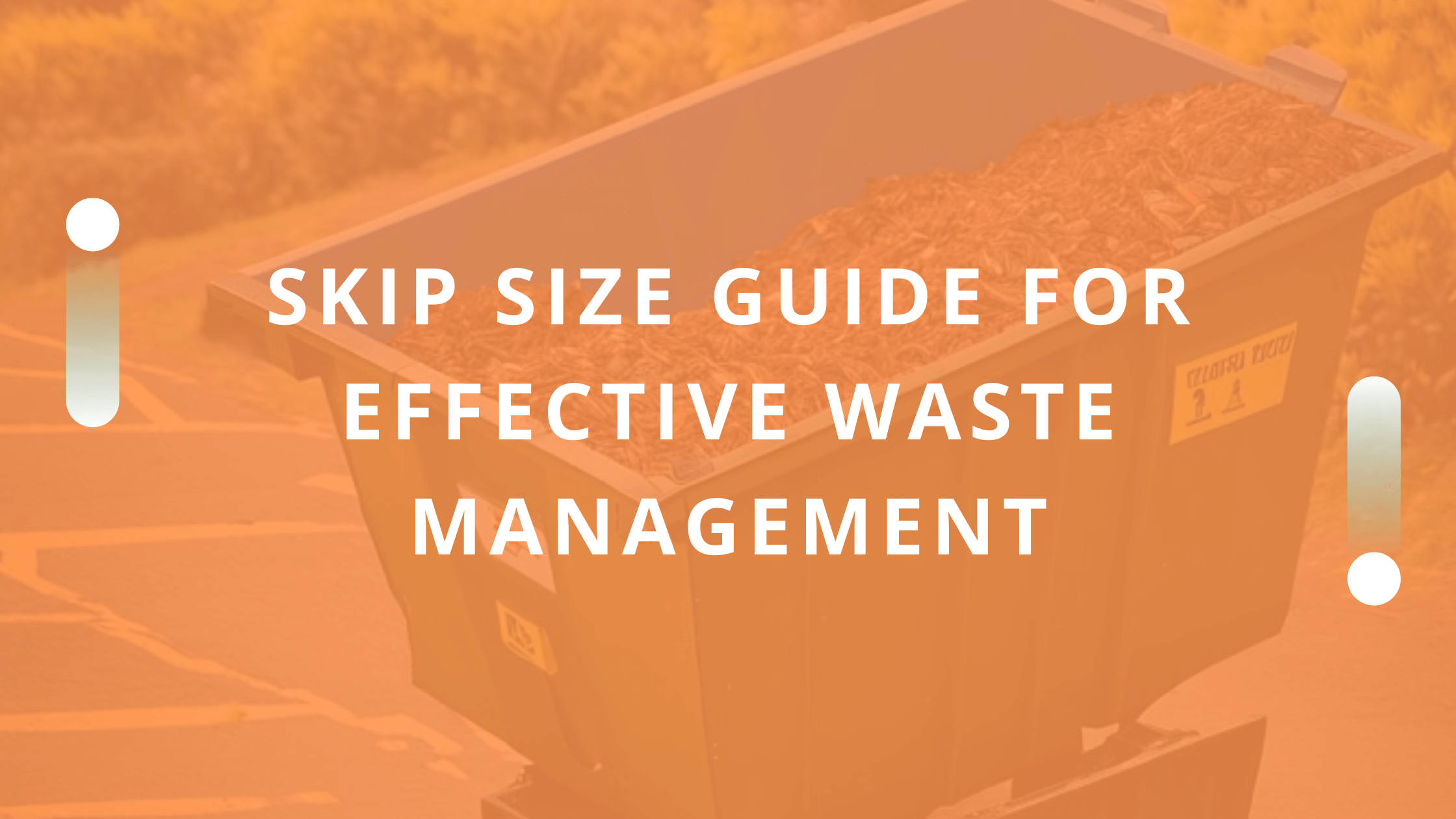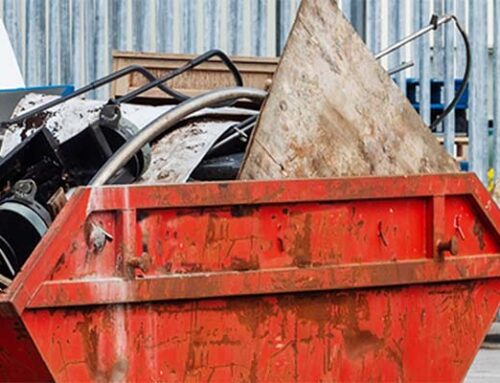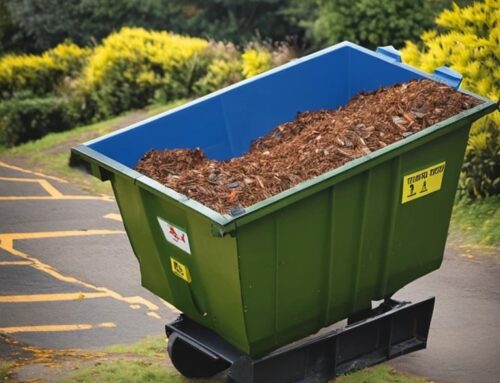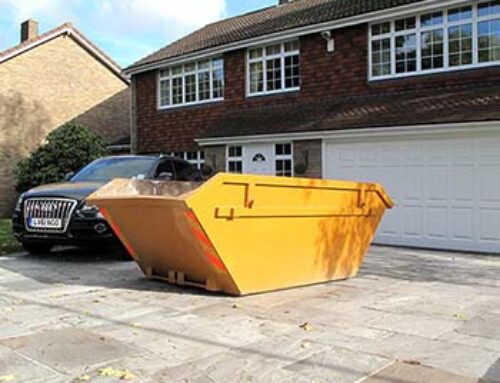Selecting the appropriate skip size is a key element in efficient waste management, whether it’s for domestic, garden, or commercial projects in the UK. Skip sizes vary considerably, ranging from the small two cubic-yard skips to the large 40 cubic-yard ones, each designed for different waste disposal needs. This guide offers an in-depth look at various skip sizes and their suitable applications to help you make an informed choice.
Understanding Skip Sizes
- Measurement: Skips are measured in cubic yards (yd³). One cubic yard roughly equals the space of ten bin bags or two large kitchen appliances.
Specific Skip Sizes and Uses
2 Yard Skip (Mini Skip):
- Capacity: About 20-30 bin bags.
- Ideal For: Small domestic tasks like minor garden clean-ups or small DIY projects.
4 Yard Skip (Midi Skip):
- Capacity: 40-60 bin bags.
- Ideal For: Medium-sized domestic projects, like garden renovations or bathroom refits.
6 Yard Skip (Small Builders Skip):
- Capacity: 60 bin bags.
- Ideal For: Small projects suitable for heavy waste like soil and rubble. It is the largest size for heavy waste disposal.
8 Yard Skip (Large Builders Skip):
- Capacity: 80 bin bags.
- Ideal For: Various uses including builders waste, household, and commercial clearances. Often the largest size allowed on public highways.
10 Yard Skip:
- Capacity: 100 bin bags.
- Ideal For: Commercial waste disposal, factory, and office clearances. Often restricted on public highways.
12 Yard Skip:
- Capacity: 120 bin bags.
- Ideal For: Similar to the 10-yard skip, focusing on commercial waste like office and factory clearances. Usually not permitted on public highways.
14 Yard Skip:
- Capacity: 140 bin bags.
- Ideal For: Larger trade or commercial waste removal, including shop fittings, green waste, and light construction waste.
16 Yard Skip (Maxi Skip):
- Capacity: 160 bin bags.
- Ideal For: Large amounts of lightweight bulky waste like furniture, plastics, and packaging. Suitable for commercial renovation and construction projects.
Have you read: How to Dispose of Paint Responsibly
20 Yard Skip (RORO Skip):
- Capacity: About 220 bin bags.
- Ideal For: Large-scale construction waste, debris, timber, metal, rubble, and garden waste. Shares dimensions with the 40-yard containers.
40 Yard Skip (RORO Skip):
- Capacity: Largest available skip, ideal for substantial waste quantities.
- Ideal For: Long-term waste management for businesses with large waste production. Compatible with waste compactor units.
Factors to Consider When Choosing a Skip
- Project Size: Assess the scope of your project to determine the most appropriate skip size.
- Type of Waste: Different waste types (e.g., bulky items, garden waste, construction debris) may necessitate different skip sizes.
- Amount of Waste: Estimate the waste volume to select a skip that can accommodate it without overflowing.
- Space Availability: Ensure adequate space for the chosen skip size, especially for larger ones.
- Budget Constraints: Larger skips cost more, so balance your waste disposal needs with your budget.
- Legal Permissions: A permit from the local council is often required to place skips on public property, particularly for larger sizes.
Key Points to Remember
- Small Skips (2, 4, 6, and 8 yards) are ideal for domestic waste, DIY jobs, and smaller trade waste.
- Permits are Required for skips on public highways, with size limitations typically on sizes over 8 yards.
- Large Skips and RORO skips are better suited for commercial and industrial waste management, particularly for continuous waste streams.
Conclusion
Choosing the right skip size is essential for effective and cost-efficient waste management, whether for a home project or a commercial venture. This guide helps simplify your decision-making process by detailing various skip sizes and their applications. Efficient waste disposal saves time and money and contributes to environmental conservation.
For skip hire needs, consider “Skip Hire Epsom” for a range of skips suitable for various waste management requirements, ensuring you get the best fit for your project’s specific needs. “Skip Hire Epsom” allows you to manage your waste responsibly, efficiently, and environmentally friendly.
Frequently Asked Questions
Q: How can I choose the right skip size?
A: Assess your project’s nature, the type and volume of waste, space availability for the skip, and any legal permit requirements.
Q: What items are prohibited in skips?
A: Hazardous materials, electrical appliances, tyres, and certain liquids are usually prohibited. Check with your provider for specifics.
Q: Is a larger skip more cost-effective?
A: Often, yes. A larger skip can prevent the need for multiple hires, saving money in the long run.
Q: What’s the standard skip hire period?
A: Typically, 7-14 days, but longer periods can often be arranged with the provider for an additional fee.
Q: Do I need to be present for skip delivery?
A: Not necessarily, but it’s recommended if you have specific placement instructions.
Q: Can skips be placed on slopes?
A: Generally, it’s unsafe. Skips should be placed on a flat, stable surface.
Q: How do you avoid overloading a skip?
A: Don’t fill the skip beyond the top edge. Overloading can lead to safety issues and extra charges.
Q: What happens to the waste in the skip?
A: Waste is usually sorted for recycling, with non-recyclable items disposed of according to environmental guidelines.
Q: Can I dispose of garden waste in a skip?
A: Yes, but there may be restrictions on the amount of soil allowed.
Q: What if I don’t have space for a skip on my property?
A: You can place it on the road, but you’ll need a permit from the local council, which your skip provider can usually arrange.
You can also read: 7 Effective Ways for Cost-Effective Waste Removal





Leave A Comment